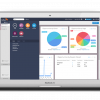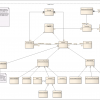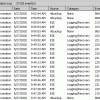Requirements
Articles
 |
Applying Data Analytics to Test Automation Testers gather lots of metrics about defect count, test case execution classification, and test velocity—but this information doesn't necessarily answer questions around product quality or how much money test efforts have saved. Testers can better deliver business value by combining test automation with regression analysis, and using visual analytics tools to process the data and see what patterns emerge. |
|
 |
More Than a Score: Taking a Deeper Dive into Your Metrics One key benefit of metrics is that they can be measured using a standard process; we can explain the numbers, and leadership can understand what that means. The downside is that it is only a measurement, so issues can easily hide until they become problems, and great work can also go unrepresented. Sporting events are a great example: The end score tells you who won, but not the details of the game. We need to look deeper. |
|
 |
Overcoming Challenges to Good Test Documentation Getting good test documentation is a consistent challenge. Agile proposes that you should go very light on documentation, and while test documentation does not need to be heavy, it does need to be clear and cover all that the product is intended to do so you can ensure testing is consistent and results are recorded. Here's how to overcome some major barriers to getting good test documentation. |
|
|
|
Getting Started with Business Intelligence Testing There’s a bit of hype in terms such as business intelligence, data analytics, and data mining. In testing terms, though, it means working with scripts and databases, often without traditional GUI interaction. But core testing skills—analysis, synthesis, modeling, observation, and risk assessment—will still help you go far in business intelligence testing. |
|
 |
Lessons Learned in Testing CRM Software CRM systems manage a company’s business relationships, including customers’ data, information, and interactions, so there’s a lot that can—and should—be tested. Viktar Sachuk talks about his experience in testing CRMs to provide some tips for dealing with the trickiest parts of CRM testing, specifically focusing on some preparatory measures, functional testing, integration testing, and test automation. |
|
 |
Requirements Mapping Using Business Function Test Suites On this team, testers were overcommitted, avoidable defects were surfacing, and documentation was hard to find. Worse, trust and morale were low. Upgrading tools was out of the question, so the testers decided to take matters into their own hands and create incremental change themselves. Here's how a team added a new type of traceability to its requirement test case world. |
|
 |
Slim Down Your Test Plan Documentation Test plans are essential for communicating intent and requirements for testing efforts, but excessive documentation creates confusion—or just goes unread. Try the 5W2H method. The name comes from the seven questions you ask: why, what, where, when, who, how, and how much. That's all you need to provide valuable feedback and develop a sufficient plan of action. |
|
 |
The Unspoken Requirement: Testing for Consistency It's easy to see that style consistency is important when discussing the user interface. But there are other areas where being consistent is just as important, even though they are not as visible. Consistency is one of the quality attributes of a product—any product—even if it is not stated clearly in the requirements documents, and testers have a responsibility to check for it. |
|
 |
Testing during Transition: Test Criteria for Outsourced Software In the world of IT outsourcing, it is not uncommon for a company to have its applications and infrastructure developed or maintained by others. As vendors compete for this business, a common trial is testing the transition activity as a whole. How would you design acceptance criteria of a transition trial so that it is testable and clearly communicated? |
|
 |
Who’s Using Your App? Examine Logs for Testing Insight When testing an application, have you ever thought to yourself, "I wonder who uses this"? Examining the app's logs can give you some idea. Logs are helpful for testers because they provide real feedback and insight into an application as it’s being used, as well as information that describes or can even help solve bugs. Here's how to use them to inform your testing. |
Pages
Recommended Web Seminars
| May 23 | How Generative AI Boosts Speed and Quality in Software Testing |
| On Demand | Building Confidence in Your Automation |
| On Demand | Leveraging Open Source Tools for DevSecOps |
| On Demand | Five Reasons Why Agile Isn't Working |
| On Demand | Building a Stellar Team |












